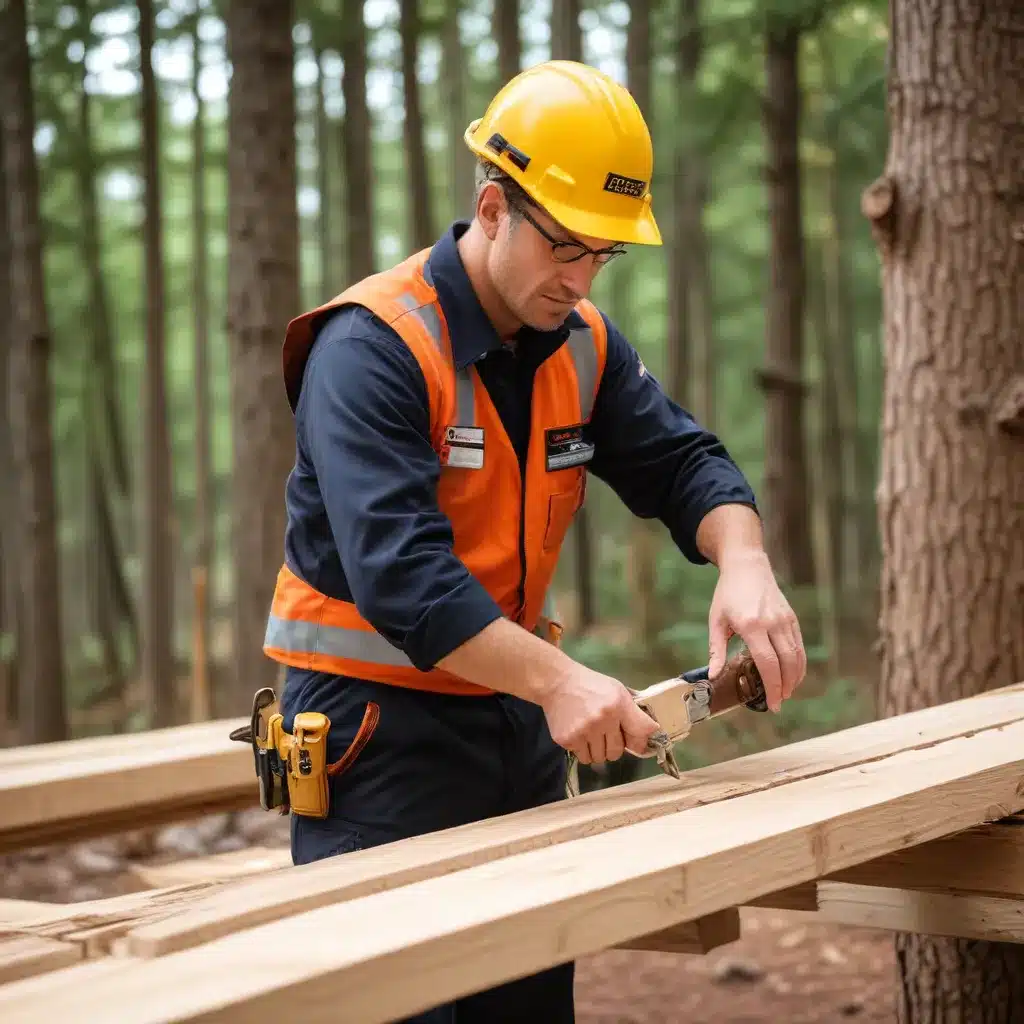
Prioritizing Safety: The Bedrock of Exceptional Woodworking
As an experienced woodworker and craftsman, I’ve learned that safety should always be the top priority when working with wood. It’s the foundation upon which we build our skills, creativity, and exceptional projects. In this comprehensive guide, I’ll share my insights and proven techniques for mastering the art of safety in the workshop, empowering you to elevate your woodworking journey to new heights.
Woodworking is a captivating and rewarding pursuit, but it also inherently involves navigating a variety of potential hazards. From sharp tools to powerful machinery, the workshop can quickly become a dangerous environment if not approached with the utmost care and diligence. As woodworkers, it’s our responsibility to prioritize safety at every turn, ensuring not only our own well-being but also the protection of those around us.
Understanding the Risks: Identifying and Mitigating Potential Dangers
The first step in creating a safe woodworking environment is to thoroughly understand the risks involved. Sharp blades, spinning saw discs, and heavy machinery can all pose a serious threat if not handled with the proper precautions. Additionally, wood dust, fumes, and even the potential for fire present additional hazards that must be addressed.
By taking the time to identify and address these risks, we can develop a comprehensive safety plan that safeguards our workspace and our well-being. This might involve investing in high-quality personal protective equipment (PPE), implementing robust dust collection systems, and establishing clear safety protocols for tool usage and workshop procedures.
One of the most critical aspects of risk mitigation is maintaining our tools in top condition. Dull blades, worn bearings, and malfunctioning guards can all significantly increase the likelihood of accidents. As such, a dedicated routine for tool maintenance and inspection is essential. Regularly sharpening our chisels, sanding discs, and saw blades, as well as ensuring that all safety features are functioning properly, can go a long way in preventing injuries and accidents.
Cultivating a Culture of Safety: Empowering Ourselves and Our Peers
Safety is not just an individual responsibility; it’s a collective endeavor that requires the active participation of every woodworker in the workshop. By fostering a culture of safety, we can empower ourselves and our peers to remain vigilant, proactive, and accountable when it comes to maintaining a secure working environment.
One effective way to cultivate this culture is through comprehensive training and ongoing education. Workshops, seminars, and hands-on demonstrations can equip us with the knowledge and skills necessary to recognize and mitigate potential hazards. Additionally, regular team meetings and safety reviews can help reinforce best practices and ensure that everyone is on the same page when it comes to prioritizing safety.
Encouraging open communication and a willingness to call out unsafe behaviors is also crucial. By creating an environment where we feel comfortable addressing concerns or suggesting improvements, we can collectively work towards continuous improvement and a stronger safety culture.
Embracing the Power of Technology: Leveraging Modern Innovations for Enhanced Safety
In the ever-evolving landscape of woodworking, technology has played a pivotal role in revolutionizing the way we approach safety. From advanced dust collection systems to smart power tools with built-in safety features, the modern woodworker has access to a wealth of technological solutions that can dramatically enhance the level of protection in the workshop.
One such innovation that has particularly transformed the industry is the introduction of smart power tools. These cutting-edge devices often incorporate features like automatic blade brakes, blade guards, and anti-kickback mechanisms, significantly reducing the risk of serious injury. By leveraging these technological advancements, we can enhance our confidence and focus on the creative aspects of our craft, rather than constantly worrying about potential dangers.
Additionally, the integration of sophisticated dust collection and air filtration systems has been a game-changer for the health and well-being of woodworkers. These systems effectively capture and contain the harmful wood dust and particles that can accumulate in the workshop, minimizing our exposure to respiratory hazards.
Fostering a Lifelong Commitment to Safety: Continuous Learning and Improvement
Safety in woodworking is not a one-time accomplishment; it’s an ongoing journey of continuous learning and improvement. As our skills and experience grow, we must remain vigilant in our commitment to safety, adapting our practices to the evolving needs of our workshop and the latest industry developments.
This commitment to lifelong learning can take many forms, from regularly attending industry conferences and workshops to engaging with online communities of fellow woodworkers. By staying curious and open to new perspectives, we can continuously refine our safety protocols, discover innovative techniques, and share our knowledge with others.
Moreover, it’s essential to embrace a mindset of continuous improvement, where we constantly seek ways to enhance the safety and efficiency of our workflows. This might involve experimenting with new tools, testing alternative safety features, or collaborating with peers to identify areas for improvement.
Conclusion: Elevating Woodworking through Uncompromising Safety Practices
In the exhilarating world of woodworking, safety must be the foundation upon which we build our craft. By prioritizing the well-being of ourselves and our peers, we not only safeguard our workshop but also unlock the true potential of our creative expression.
Through a deep understanding of risks, the cultivation of a safety-conscious culture, and the strategic embrace of technological advancements, we can elevate our woodworking journey to new heights. By committing to lifelong learning and continuous improvement, we ensure that safety remains at the forefront of our practice, empowering us to create exceptional, heirloom-quality pieces with confidence and pride.
As you embark on your own woodworking adventures, remember that safety is not just a box to check, but a mindset that permeates every aspect of our craft. By embracing this philosophy, we not only protect ourselves and our loved ones but also contribute to the advancement of the entire woodworking community. So, let us forge ahead, with safety as our guiding light, and elevate the art of woodworking to new, unparalleled levels of excellence.

